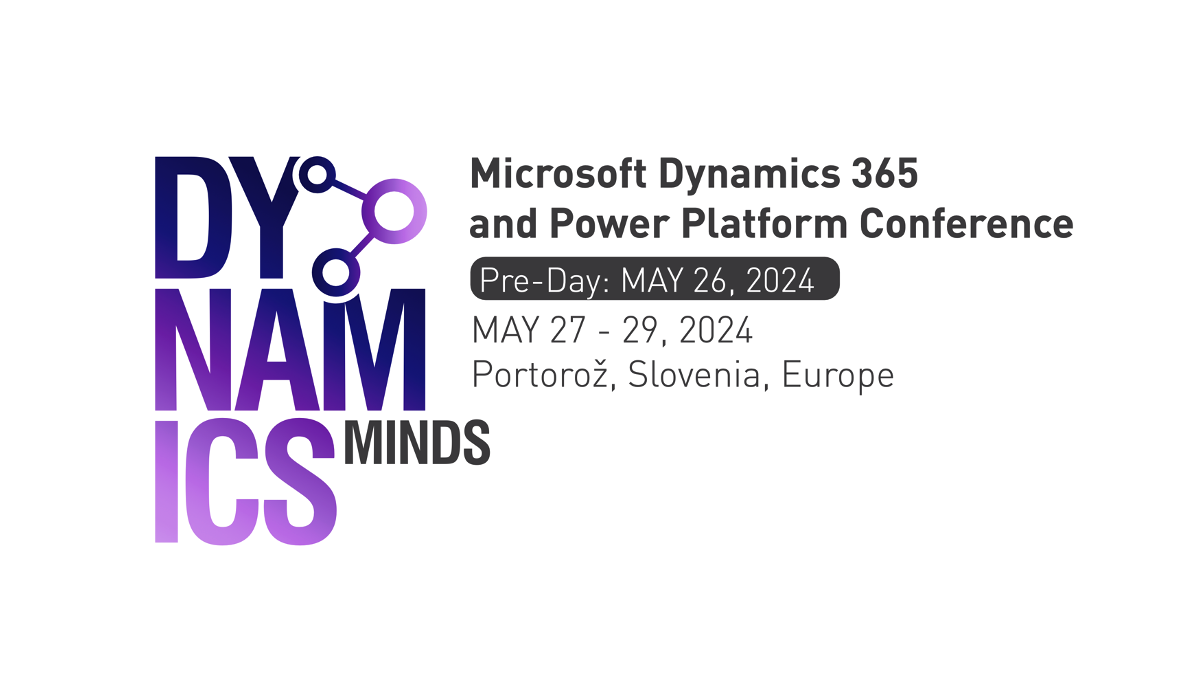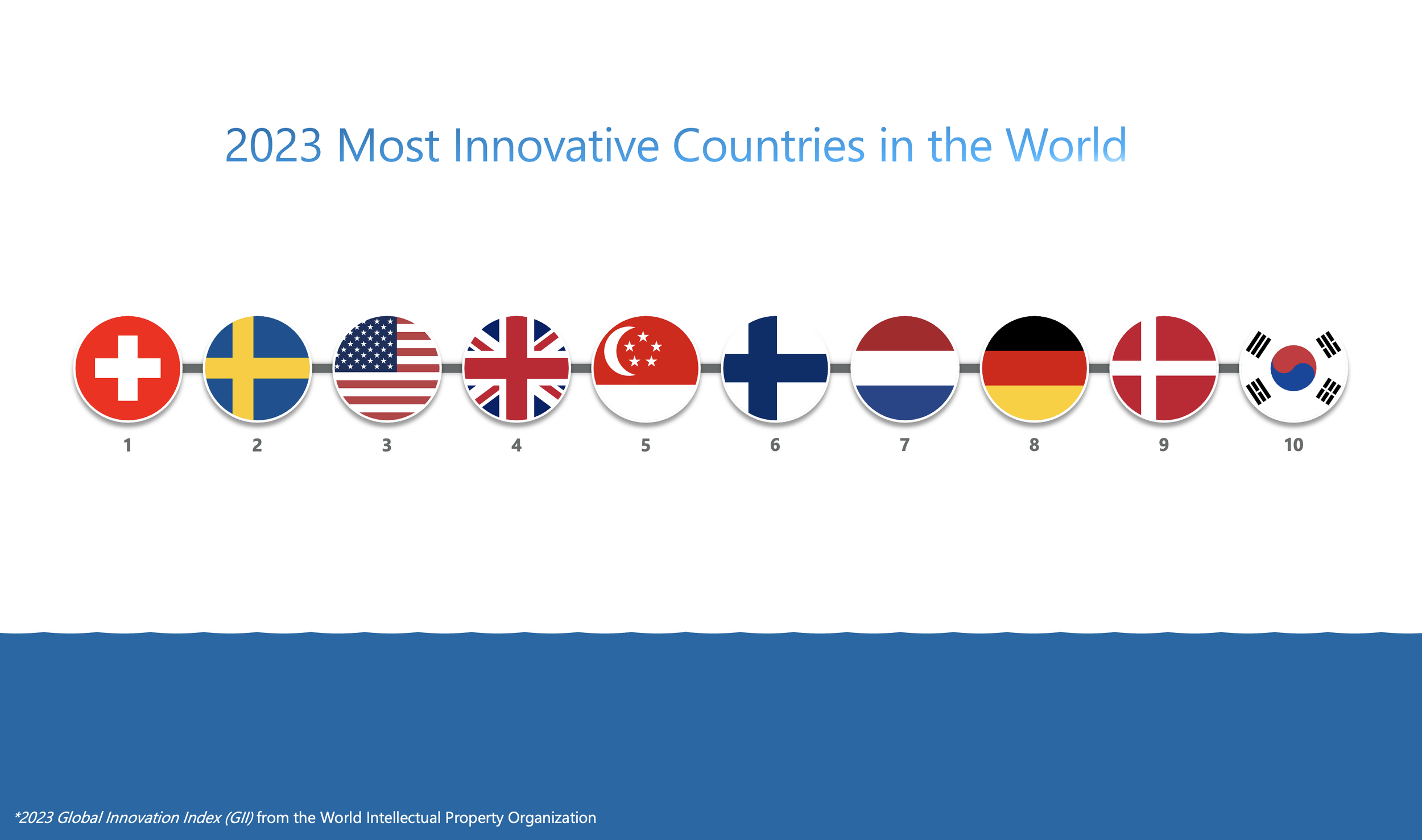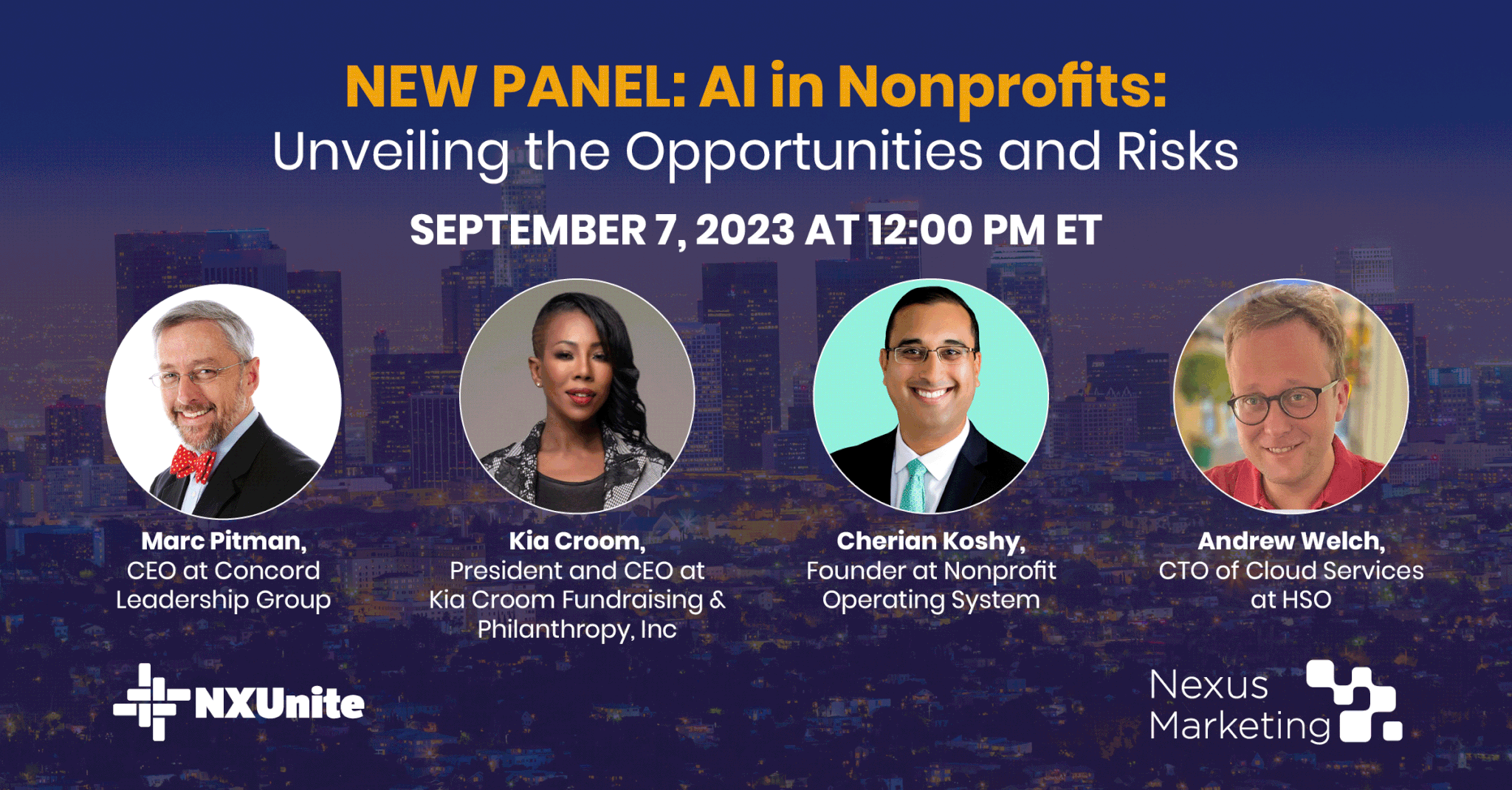
Brasov Forum 2025 🇷🇴 | Shaping the Future of Trustworthy AI
Hosted by The Center for Trustworthy AI, the Brasov Forum is a 3-day conference taking place 3-5 December 2025. This conference brings together executive leaders, technologists doing ground breaking work in AI, lawyers, public officials, and other luminaries as we focus on topics in Trustworthy AI. These include AI’s strategic, legal, regulatory, and ethical landscape, adoption and engineering.

Webinar | Trustworthy AI 101: The C-Suite’s 45-Minute Guide
New AI regulations and board-level scrutiny are arriving faster than most enterprises can adapt. In this executive briefing you’ll get a crash course on how to build, govern, and scale AI responsibly; without slowing innovation.

Dynamics Minds 2025 🇸🇮 | The Executive Forum
The Dynamics Minds conference takes place in Slovenia from 26-28 May 2025! A Dynamics 365 and Power Platform community conference, where brilliant minds meet, mingle and share.
Join the team across all 4 sessions of the Executive Forum series for Microsoft Partners, hosted exclusively by Cloud Lighthouse to light the way on all things Trustworthy AI. Includes insight in becoming the truly strategic AI partner of the future.

ColorCloud 2025 🇩🇪 | Trustworthy AI: Global View, Strategy, & Tooling
We’ve guided the Trustworthy AI journey for organizations in 11 countries. We’ll show you how to shine for your customers, get your next best job, reduce your organization’s risk, and lead the strategy with your C-Suite and board.

Canadian Power Platform Summit | Innovate & Adopt Trustworthy AI 🇨🇦
Join Mark Smith, Cloud Lighthouse Managing Partner, on 22nd March 2025 at the Canadian Power Platform Summit. Learn how to innovate and adopt with Trustworthy AI across 5 key pillars: strategy and vision, ecosystem architecture, workloads, responsible AI and scaling AI.

Berkshire Azure User Group 🇬🇧 | Trustworthy AI for Safer Systems
Join Ana Welch, Cloud Lighthouse Cloud Strategist and Partner, on 11th February 2025 at the Berkshire Azure user group. Kickstart your journey into Trustworthy AI, learning how to build safer systems for real-world readiness.

Microsoft Power Platform Conference 2024 in Las Vegas 🇺🇸
The global Power Platform community converges in Las Vegas from 18-20 September 2024 for the Microsoft Power Platform Community Conference! Join Mark Smith, Chris Huntingford, and Andrew Welch together with Dona Sarkar to build your AI strategy with low-code, become an AI extensibility expert with Power Platform, and learn why “free” licensing is not cheaper in the long-run. Join us!

Cloud Lighthouse @ European Power Platform Conference 2024 🇧🇪
The global Power Platform community converges in Brussels, Belgium 11-13 June 2024 for the European Power Platform Conference! Andrew, Chris, and Ana alongside Capgemini’s Carl Cookson will be there sharing how to Dataverse, Azure data platform services, and adoption best practices help you scale Power Platform across your organization. Join us!

Ecosystems Podcast live, and much more at DynamicsMinds 2024 🇸🇮
Convergence and integration of technical services are coupling with modern organizational models for accelerating rapid application development to create more and more scenarios where Power Platform and the Azure Data Platform are inextricably linked. Put another way, the data platform has grown ever more sophisticated whilst at the same time solutions developed in Power Platform demand access to more and more enterprise data. This session explores five strategies for integrating these two technology sets in the Microsoft Cloud: Point to Point, Direct to Master Data, Master Data Node, Data Landing Zone, and Modern Data Platform. We’ll consider ideal scenarios, advantages, and disadvantages of each before concluding with real-world examples of organizations who have done this in practice across several industries.

Join us at Color Cloud, a Microsoft community conference 🇩🇪
It is as yet unknown if artificial intelligence is more akin to a “great invention” of the 19th and 20th centuries, or if it will ultimately represent another more incremental evolution of existing capabilities. The former—as seems more likely given the immense investments being made today—will present significant challenges to nearly every organization that, having become accustomed to incremental change, is suddenly faced with a “great inventions” caliber paradigm shift that AI seems to portend. Or, as I continue to remind the CIOs with whom I work closely, the grace period for organizations to get their act together and position themselves for the next wave is growing much shorter, the margin for error much more narrow. In this session we will explore AI strategies that are flexible, able to absorb tomorrow what we don’t fully grasp today, strategies that offer value to the organization beyond specific AI-driven workloads because the nature and value of these workloads will remain unclear for some time. We will understand core concepts behind AI acting on enterprise data, present a framework of five pillars upon which future-ready AI strategies are built, and discuss concepts and approaches to mitigate risk in your organization’s AI strategy.

AI Applied CIO roundtable, hosted by HSO International 🇳🇱
Andrew Welch presented a keynote and facilitated a CIO roundtable at the invite-only AI Applied event, hosted by HSO International (a Cloud Lighthouse partner)… Last year was a stand-out year for AI developments. According to Gartner, generative AI technologies reached the peak of the hype cycle. It's now time to step away from the hype and move towards making practical plans to leverage the power of AI in your organization.

UN Low-Code + API Summit 🇪🇸
Wave periods between major innovation in the cloud are growing shorter. We no longer have the luxury of waiting it out, of adopting later. Cloud ecosystems built on strategic foundations create the conditions to absorb successive waves of change. This session explored the history of these wave periods and implications that quickening technological innovation hold for global organizations, overviewed the “strategic pyramid” model for activity and system-based value in the cloud, introduced a reference ecosystem map built with ecosystem-oriented architecture, applied this architecture to a UN organizational context, and linked the architecture to a combination of Azure data, Azure AI, and Power Platform technologies.

AI Innovation Day 🇳🇱
It is as yet unknown if artificial intelligence is more akin to a “great invention” of the 19th and 20th centuries, or if it will ultimately represent another more incremental evolution of existing capabilities. The former—as seems more likely given the immense investments being made today—will present significant challenges to nearly every organization that, having become accustomed to incremental change, is suddenly faced with a “great inventions” caliber paradigm shift that AI seems to portend. Or, as I continue to remind the CIOs with whom I work closely, the grace period for organizations to get their act together and position themselves for the next wave is growing much shorter, the margin for error much more narrow. In this session we will explore AI strategies that are flexible, able to absorb tomorrow what we don’t fully grasp today, strategies that offer value to the organization beyond specific AI-driven workloads because the nature and value of these workloads will remain unclear for some time. We will understand core concepts behind AI acting on enterprise data, present a framework of five pillars upon which future-ready AI strategies are built, and discuss concepts and approaches to mitigate risk in your organization’s AI strategy.

MS Stage 🇺🇦
It is as yet unknown if artificial intelligence is more akin to a “great invention” of the 19th and 20th centuries, or if it will ultimately represent another more incremental evolution of existing capabilities. The former—as seems more likely given the immense investments being made today—will present significant challenges to nearly every organization that, having become accustomed to incremental change, is suddenly faced with a “great inventions” caliber paradigm shift that AI seems to portend. Or, as I continue to remind the CIOs with whom I work closely, the grace period for organizations to get their act together and position themselves for the next wave is growing much shorter, the margin for error much more narrow. In this session we will explore AI strategies that are flexible, able to absorb tomorrow what we don’t fully grasp today, strategies that offer value to the organization beyond specific AI-driven workloads because the nature and value of these workloads will remain unclear for some time. We will understand core concepts behind AI acting on enterprise data, present a framework of five pillars upon which future-ready AI strategies are built, and discuss concepts and approaches to mitigate risk in your organization’s AI strategy.

NetHope Global Summit 🇩🇪
Non-profits and NGOs the world over are struggling with the shift in cloud technology from activity-based to system-based value. This means that value is shifting from the use of siloed “point solutions” in the direction of architecting strategic foundations and building platform ecosystems—the fabric into which applications, infrastructure, integrations, and the modern data platform is woven. This strategic approach to cloud technology is critical for organizations wishing to become “future-ready”, harness the power of AI, drive down costs, increase operational efficiency, and better serve employees, volunteers, partners, and constituents. In the Microsoft Cloud, workloads are increasingly being built to (a) integrate with one another, (b) integrate with the broader cloud estate, and (c) make use of common building blocks such as core platform services, Azure application and integration services, the “Fabric” modern data platform, and Power Platform. In other words, solutions are being tied together rather than architected in isolation, and this is generating vast datasets built as "single sources of truth". This session will get you thinking like the world's boldest solution and enterprise architects as we explore real-world examples of how organizations are stitching their workloads together into an ecosystem, best practices for doing so, and lessons learned along the way.

South Coast Summit 🇬🇧
Convergence and integration of technical services are coupling with modern organizational models for accelerating rapid application development to create more and more scenarios where Power Platform and the Azure Data Platform are inextricably linked. Put another way, the data platform has grown ever more sophisticated whilst at the same time solutions developed in Power Platform demand access to more and more enterprise data. This session explores five strategies for integrating these two technology sets in the Microsoft Cloud: Point to Point, Direct to Master Data, Master Data Node, Data Landing Zone, and Modern Data Platform. We’ll consider ideal scenarios, advantages, and disadvantages of each before concluding with real-world examples of organizations who have done this in practice across several industries.

Nordic Summit 🇩🇰
Convergence and integration of technical services are coupling with modern organizational models for accelerating rapid application development to create more and more scenarios where Power Platform and the Azure Data Platform are inextricably linked. Put another way, the data platform has grown ever more sophisticated whilst at the same time solutions developed in Power Platform demand access to more and more enterprise data. This session explores five strategies for integrating these two technology sets in the Microsoft Cloud: Point to Point, Direct to Master Data, Master Data Node, Data Landing Zone, and Modern Data Platform. We’ll consider ideal scenarios, advantages, and disadvantages of each before concluding with real-world examples of organizations who have done this in practice across several industries.

Emergency Tech Show 🇬🇧
Join Microsoft cloud expert Andrew Welch on a journey to discover the digital building blocks for creating a platform-first law enforcement approach. One that enables UK Police forces to benefit from advances in technology, but that enables rapid and cost-effective deployment of connected applications. Hear also how the MET Police resolves Grey IT challenges using this innovative approach.

NXUnite Panel 🇺🇸
It is as yet unknown if artificial intelligence is more akin to a “great invention” of the 19th and 20th centuries, or if it will ultimately represent another more incremental evolution of existing capabilities. The former—as seems more likely given the immense investments being made today—will present significant challenges to nearly every organization that, having become accustomed to incremental change, is suddenly faced with a “great inventions” caliber paradigm shift that AI seems to portend. Or, as I continue to remind the CIOs with whom I work closely, the grace period for organizations to get their act together and position themselves for the next wave is growing much shorter, the margin for error much more narrow.

D365 + Power Platform UG 🇬🇧
Workloads in the Microsoft Cloud are increasingly being built to (a) integrate with one another, (b) integrate with the broader enterprise application and data system, and (c) make use of common building blocks such as core platform services, Azure data, application, and integration services, and Power Platform. On the latter, the most successful organizations are now using Power Platform to build ambitious, high value solutions. In other words, solutions are being tied together rather than architected in isolation, and this is generating vast datasets built as "single sources of truth".

